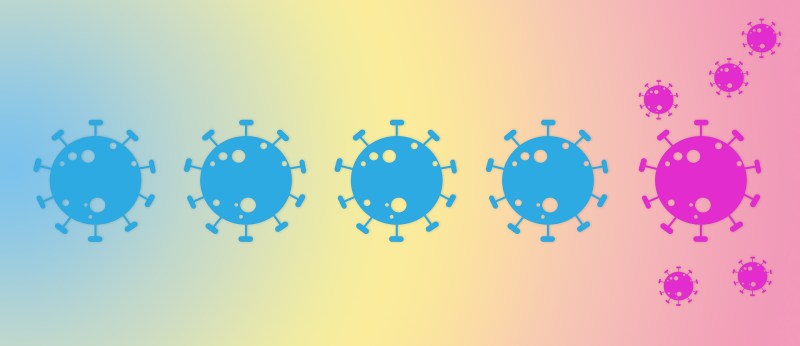The first two cases of the South African SARS-CoV-2 variant in California were recently identified by Stanford’s Clinical Virology Lab — one in Santa Clara County and one in Alameda County.
Researchers say the variant is more transmissible, but current vaccines are still mostly effective against it.
The variant, known as B.1.315, is one of the many COVID-19 strains discovered globally. Other variants include B.1.1.7 in the United Kingdom, P.1 and P.2 in Brazil and L452R in California.
With the rise of new variants, genetic sequencing is vital for monitoring and preparing for possible changes in viral transmissibility, vaccine efficacy and disease severity, associate professor of pathology and medicine Benjamin Pinsky said in an interview with The Daily.
Pinsky, who heads Stanford’s surveillance efforts, explained that he and his lab are tackling variant detection with a two-pronged approach. They first screen all positive COVID-19 tests that come through their lab for known variants. Afterward, they choose a subset of “screen negatives,” samples that are positive for COVID-19 but not for the known variants, to look for novel mutations.
“We’re primarily looking at … where these changes are in the genome and whether they’re important proteins that we know may impact function or impact the viral transmission,” Pinsky said.
Out of over 2,000 samples that Pinsky and his lab have screened so far, they have confirmed four U.K. B.1.1.7 variants and two Brazil P.2 variants, and about 30% of their COVID-positive samples were the California L452R variant. They identified the two B.1.351 variants on Feb. 10.
“I wasn’t particularly surprised, given that it’s been spreading quite rapidly across the world,” Pinsky said. “I felt that it was only a matter of time before we saw it in our area.”
Associate professor of medicine Catherine Blish echoed that the detection of B.1.351 is “unwelcome, but also unsurprising.” On top of its higher transmissibility rates, B.1.351 is also “more resistant to the immune response generated from prior infection and vaccination,” Blish wrote in a statement to The Daily.
The new strain could staunch the progress made by the recent decline in local COVID-19 positivity rates, Blish said — but she also said that “it is not time to panic.” Though some people who have already contracted COVID-19 may be reinfected with B.1.351, the immune responses from the Pfizer and Moderna vaccines are “so robust that we expect them to be protective,” and the Johnson & Johnson vaccine is “at least protective from severe disease.”
Pinsky said that the variant discovery also provides information to vaccine manufacturers so they can begin considering whether to include the variant in vaccine updates.
Though it is difficult to estimate the number of variants that will emerge in the coming months, researchers warn that the amount will be proportional to the number of new infections.
Infectious disease clinical professor Jake Scott said that the new variants are a “warning sign that we need to step it up, in terms of our country’s ability to detect the emergence of these variants, and to learn more about whether or not they behave differently, and how our vaccines work against them.”
Santa Clara County public health director Sara Cody, however, told ABC7 News that lab capacity in the U.S. is “too limited to rapidly identify and track emerging variants.”
“A coordinated federal response and availability of supplies would help,” Blish said. “Right now, it is a patchwork of individual labs, like the work done here at Stanford by Dr. Pinsky and colleagues, who are shouldering a huge amount of the burden.”
Pinsky has been ramping up his surveillance work, moving from his own research lab into a new clinical lab — the Emerging Infectious Disease Lab — to allow him and his team to “continue more regularly and for the foreseeable future.”
Transitioning to the new lab, Pinsky and his team have also started using more automation technology, specifically liquid-handling robots that allow them to accelerate their sample screening process.
Surveillance at the national level has also been picking up speed. Infectious disease clinical professor Stanley Deresinski wrote that on Jan. 25, the Centers for Disease Control and Prevention scaled up its national surveillance program to sequence and evaluate 750 samples per week.
“COVID-19 is unlikely to ever disappear, and even when the pandemic has been controlled, continual genetic and epidemiological surveillance will be necessary to anticipate outbreaks and to judge the necessity of new vaccine development,” Deresinski wrote.
